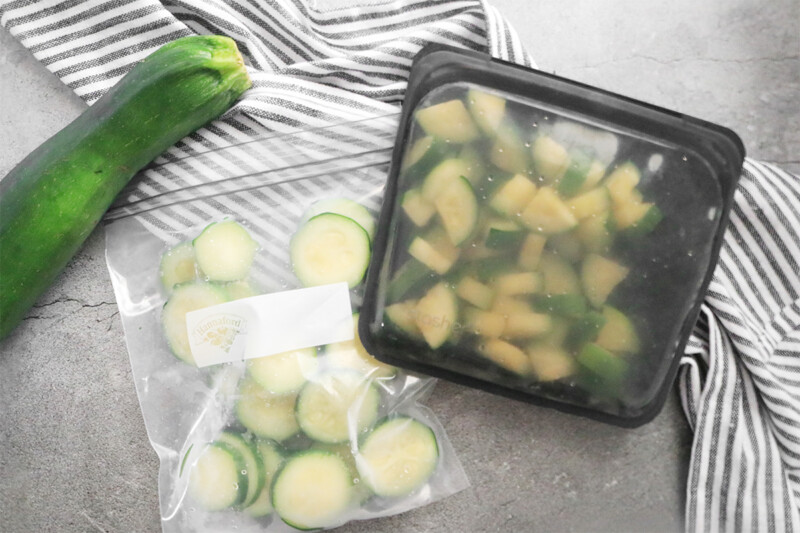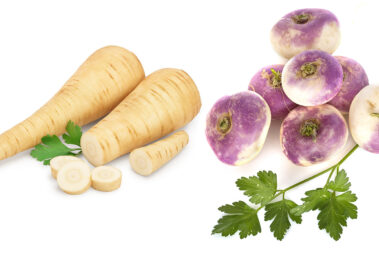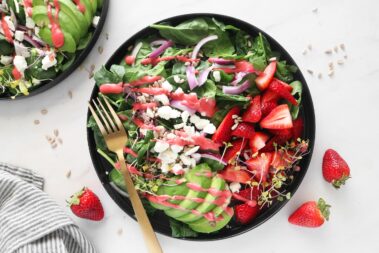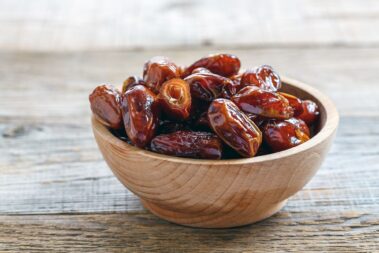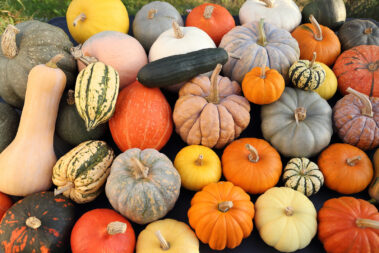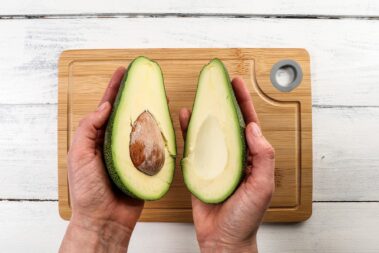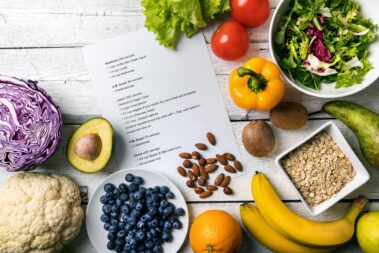At first glance, having too much zucchini might seem like a good problem to have. The summer squash is not only tasty and nutritious, but super versatile too. Still, if you have more zucchini than you know what to do with, you may want to freeze your bounty.
Maybe your quarantine garden yielded more zucchini expected. Or perhaps your neighbor gifted you some because they had too much. Or maybe you simply forgot you had zucchini and it’s about to go bad. (It’s okay—it happens to the best of us!) In any case, freezing zucchini can help you enjoy the veggie well beyond the summer season.
But freezing zucchini calls for so much more than simply sticking the veggie in the freezer. To protect the quality of your summer squash, it’s essential to learn how to freeze zucchini properly. Here’s the lowdown.
Table of Contents
You Will Need:
- zucchini
- ice bath
- large pot of water
- metal baking sheet
- slotted spoon
- freezer-safe bags
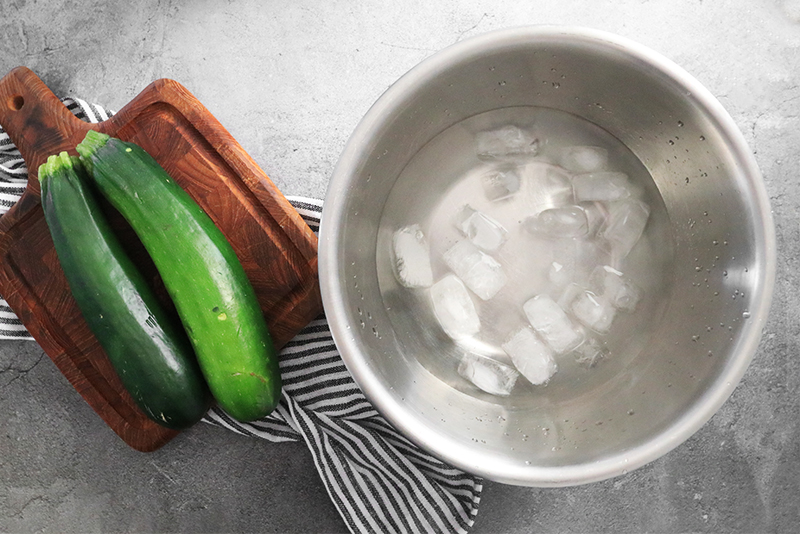
Step 1: Prepare Zucchini for Freezing
Wash the zucchini and pat dry. Slice the zucchini into 1/4 or 1/2-inch thick slices. You can also dice it by cutting each slice into four pieces.
If you’re not sure how to cut the zucchini, think about how you usually use it. Sliced zucchini is ideal for roasted “chips” or appetizers, while diced zucchini is great for soups and stews. You can also do a combination of both.
Now, it’s time to blanch the zucchini.
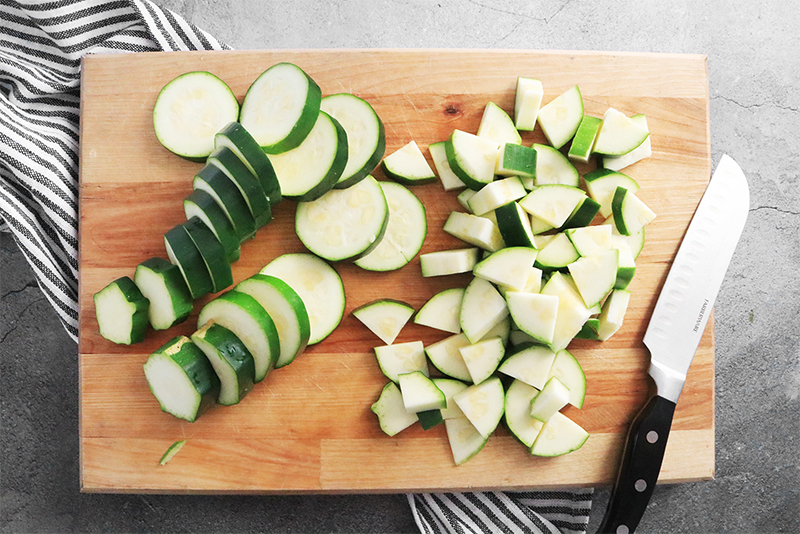
Can You Freeze Zucchini Without Blanching?
For best results, we don’t recommend freezing raw zucchini without blanching. Blanching kills bacteria and enzymes that otherwise make veggies deteriorate over time. In turn, you can retain as much texture, flavor, and color as possible.
That said, if you intend to incorporate shredded zucchini into breads or sauces, where you don’t really care about the zucchini holding its shape or firmness, freezing without blanching is a viable option that can work well. Just shred the zucchini in a food processor, place in freezer bags, and freeze.
Step 2: Blanch the Zucchini
To blanch the zucchini, bring a large pot of water to a rolling boil. Keep the ice bath nearby; make sure the water is very cold before moving forward.
Add the zucchini to the boiling water and boil for 1 minute. (If you sliced and diced the zucchini, you can blanch them in batches to keep them separate.)
Don’t add salt to the pot. This will make the zucchini mushy once frozen and thawed.
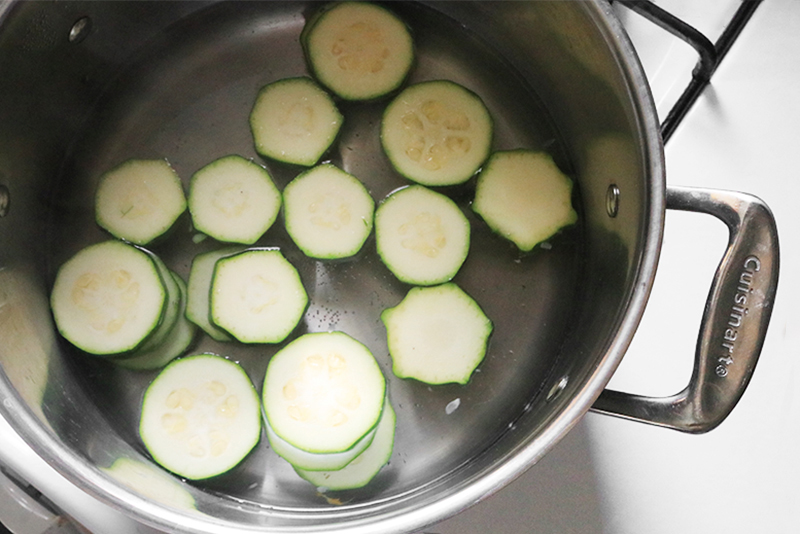
Step 3: Place Zucchini in An Ice Bath
Using a slotted spoon, transfer the zucchini to the ice bath. This immediately stops the cooking process. Leave for 1 minute.
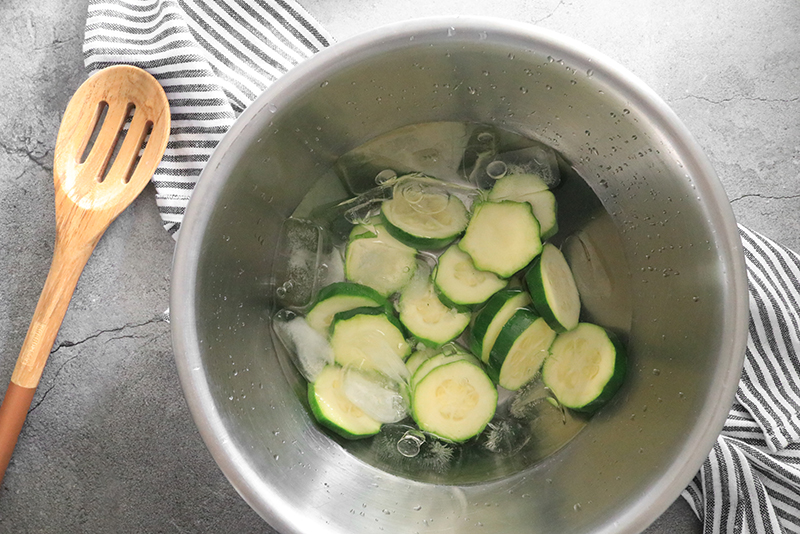
Step 4: Remove from Ice Bath & Pre-Freeze
Remove the zucchini with a slotted spoon.
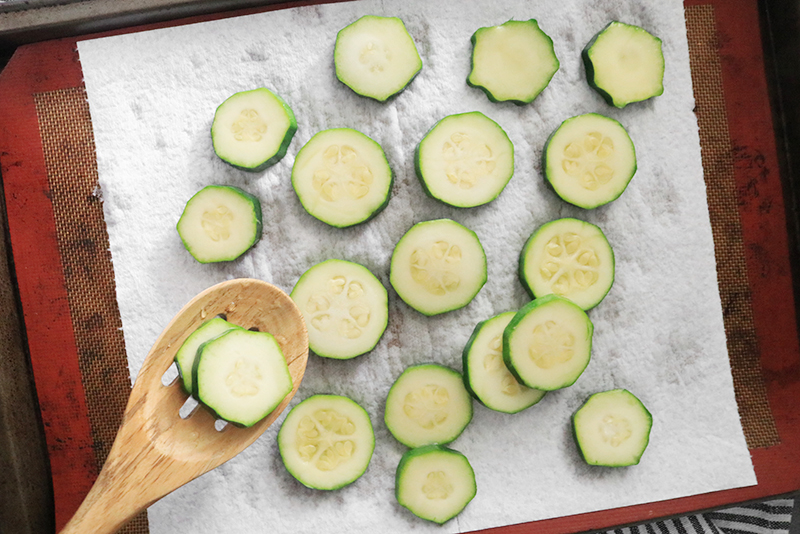
Pat the zucchini dry with a paper towel or clean cloth towel.
If preparing multiple batches (like sliced and diced zucchini), repeat the blanching process with the remaining pieces.
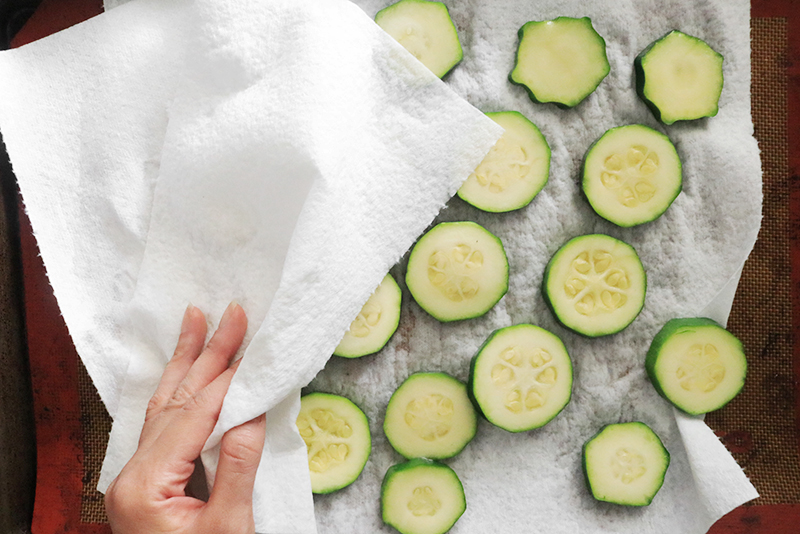
Line a metal baking sheet with parchment paper or a silicone mat. Arrange the zucchini in a single layer. Freeze for at least 2 hours; this is known as “pre-freezing.”
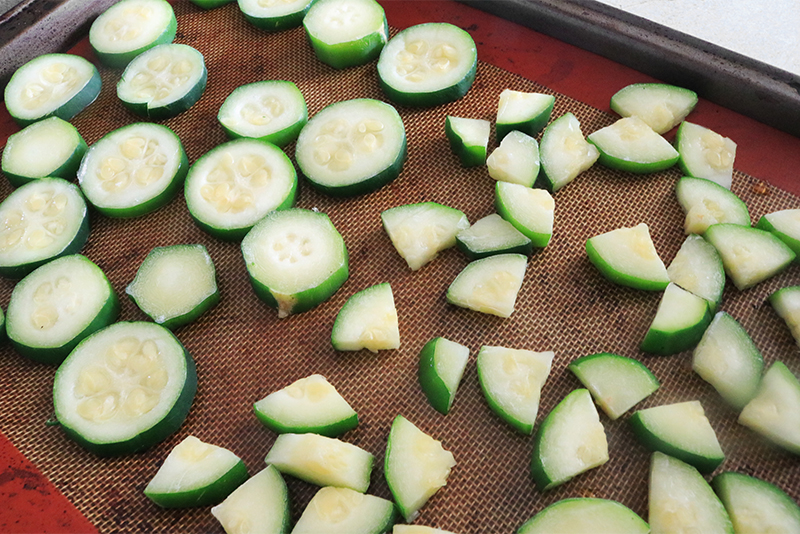
Step 5: Store & Freeze in Freezer Bags
Once pre-frozen, transfer the zucchini to a freezer safe bag. For a zero-waste option, we recommend a Stasher bag. It’s freezer-safe and dishwasher-safe!
Regardless of what type of bag you use, be sure to seal it tightly. This will help prevent freezer burn, and again, protect the quality of your zucchini.
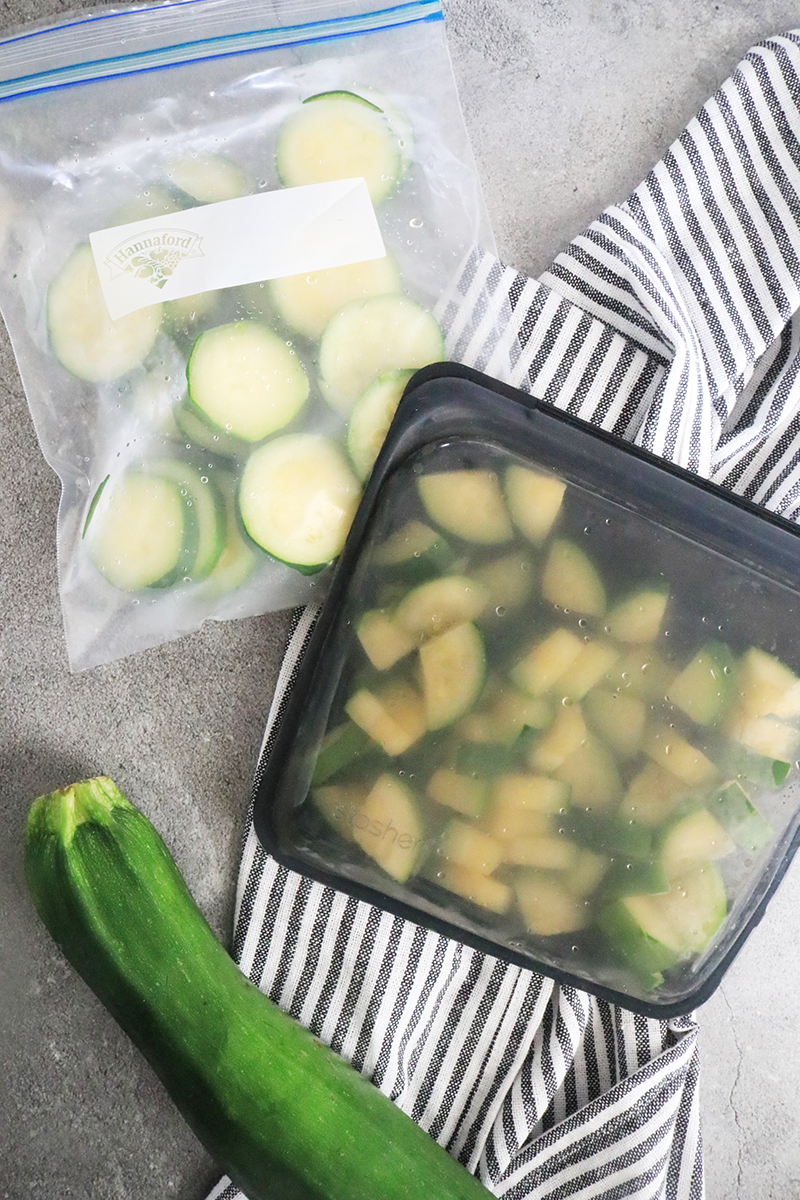
Your zucchini is ready for the freezer. According to fans of the veggie, it can last for up to 12 months in the freezer. However, for best results, try to use it within 3 months.
How to Thaw Zucchini
When you’re ready to thaw frozen zucchini, place the bag in a large bowl and store in the refrigerator overnight. (Zucchini can hold a lot water, so it will likely produce a high amount of liquid as it thaws. The bowl will keep your refrigerator clean.)
Another option is to submerge the bag in a bowl of warm water.
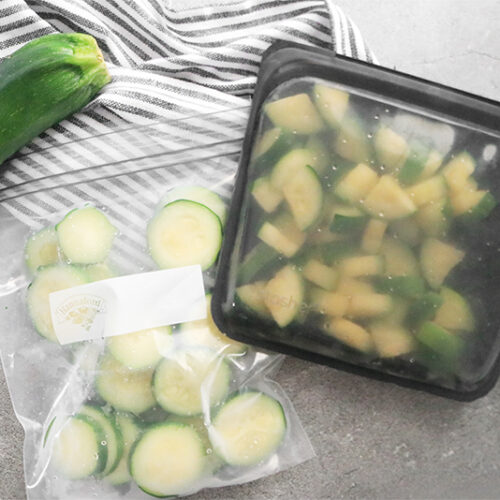
How to Freeze Zucchini
Ingredients
- 2 zucchini plus more if needed
- Ice cubes
- Water
Instructions
- Wash the zucchini and pat dry. Slice the zucchini into 1/4 or 1/2-inch thick slices. You can also dice it by cutting each slice into four pieces.
- Bring a large pot of water to a rolling boil. Prepare an ice bath in a large bowl and keep it nearby. Add the zucchini and boil for 1 minute. Don’t add salt to the pot, as this will make the zucchini mushy once frozen and thawed.
- Using a slotted spoon, transfer the zucchini into the ice bath. This stops the cooking process. Leave for 1 minute.
- Remove the zucchini from the pot with a slotted spoon. Pat the zucchini dry with a paper towel or clean cloth towel. Line a metal baking sheet with parchment paper or a silicone mat. Arrange the zucchini in a single layer. Freeze for at least 2 hours to pre-freeze.
- Once pre-frozen, transfer the zucchini to a freezer-safe bag. The zucchini will keep for up to 3 months.
Nutrition
- 18 Scrumptious Vegan Thanksgiving Desserts - November 16, 2023
- 25 Vegan Thanksgiving Sides to Complete Your Holiday Dinner - November 16, 2023
- Best Vegan Frozen Food Meals at Trader Joe’s - October 17, 2023

